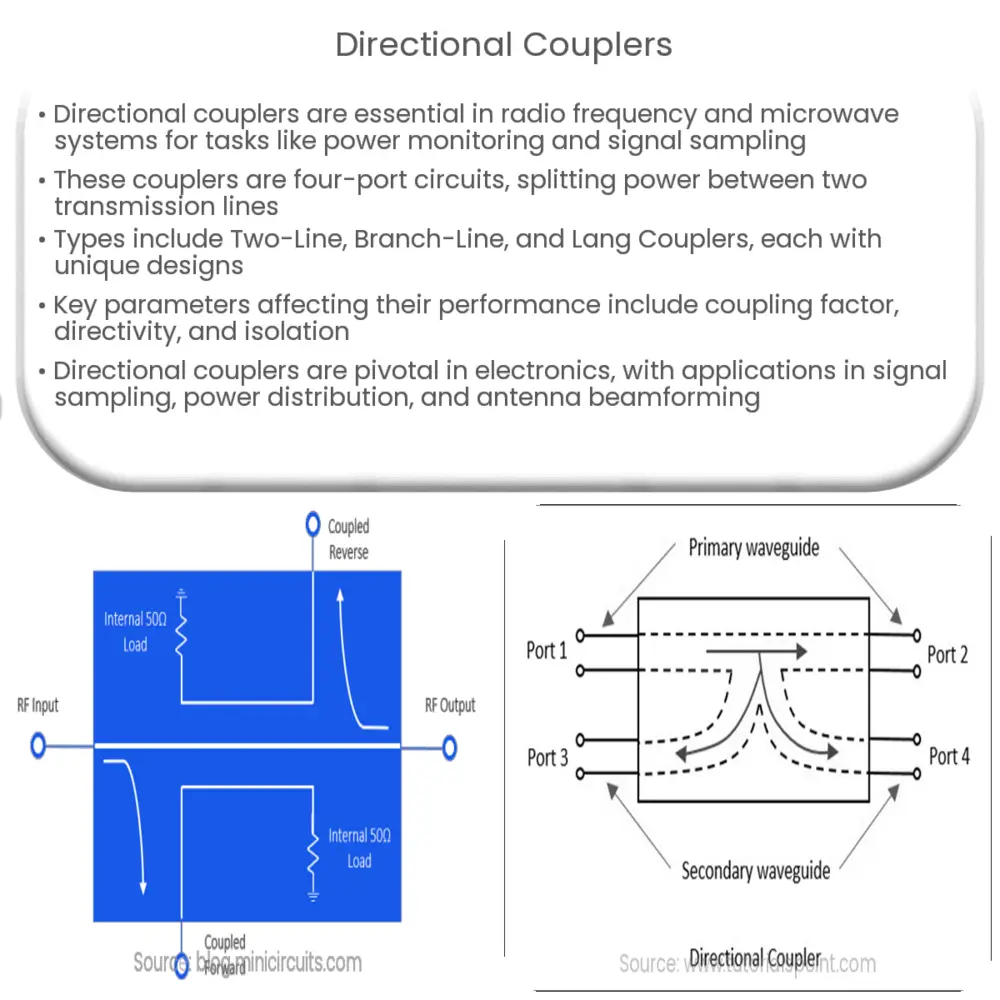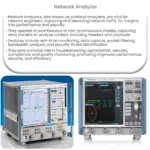Explore the fundamentals of directional couplers, their types, key parameters, applications, and design considerations in RF systems.

Introduction to Directional Couplers
Directional couplers are integral components in the field of radio frequency (RF) and microwave systems. They are used in a variety of applications, such as power monitoring, source leveling, signal sampling, and network analysis.
Understanding Directional Couplers
At their core, directional couplers are four-port circuits where one port is isolated from the input port. These ports are generally referred to as the input port (or Port 1), the output port (or Port 2), the coupled port (or Port 3), and the isolated port (or Port 4).
Directional couplers operate on the principle of splitting power between two transmission lines. When an input signal is applied to Port 1, it gets split into two output signals at Port 2 and Port 3. The signal that travels to Port 2 is the transmitted signal, while the one that goes to Port 3 is the coupled signal. The power at Port 4, the isolated port, is ideally zero.
Types of Directional Couplers
- Two-Line Couplers: Two-line couplers are the simplest form of directional couplers. They consist of two transmission lines placed close to each other, allowing electromagnetic fields to couple between them.
- Branch-Line Couplers: Branch-line couplers use quarter-wave transmission lines to divide power equally between two output ports. They are usually designed to operate at a specific frequency.
- Lang Couplers: Also known as 3dB couplers, Lang couplers are a variation of the branch-line coupler. They are designed to split power equally between the output and coupled ports.
Key Parameters of Directional Couplers
There are several key parameters to consider when dealing with directional couplers, including coupling factor, directivity, and isolation.
- Coupling Factor: The coupling factor, measured in decibels (dB), determines the proportion of power that gets diverted from the input port to the coupled port.
- Directivity: Directivity is a measure of how well the coupler differentiates between signals travelling in the forward and reverse directions.
- Isolation: Isolation, also measured in dB, is the measure of how much power is transmitted from the input port to the isolated port.
These parameters greatly influence the performance and efficiency of a directional coupler, and thus are critical in its design and application.
Applications of Directional Couplers
Directional couplers have a broad range of applications in many areas of telecommunications and electronics.
- Signal Sampling: They are commonly used to sample a signal for measurement or monitoring purposes. The sampled signal can be used for system testing or for feedback in control systems.
- Power Distribution: In RF systems, directional couplers are used to distribute power uniformly across multiple paths, ensuring efficient transmission and reception of signals.
- Network Analysis: Network analyzers, devices used to measure the network parameters of electrical networks, often use directional couplers for their operations.
- Antenna Beamforming: In modern wireless communication systems, directional couplers are used in antenna beamforming networks to improve signal reception and transmission.
Challenges and Considerations in Designing Directional Couplers
While designing directional couplers, certain challenges need to be taken into consideration. These include the size of the device, the operating frequency range, power handling capacity, and the levels of insertion loss, isolation, and directivity. It’s also important to consider the application in which the coupler will be used, as this can affect the design requirements.
Conclusion
In conclusion, directional couplers are a pivotal element in many electronic and telecommunication systems. Their ability to split and distribute signals makes them useful in a variety of applications, including signal sampling, power distribution, network analysis, and antenna beamforming. Understanding the different types of directional couplers, their key parameters, and their applications, can provide valuable insight into the efficient design and usage of these devices. Despite the design challenges, the continued advancement in technology presents promising opportunities for the development of more efficient, compact, and high-performance directional couplers in the future.



